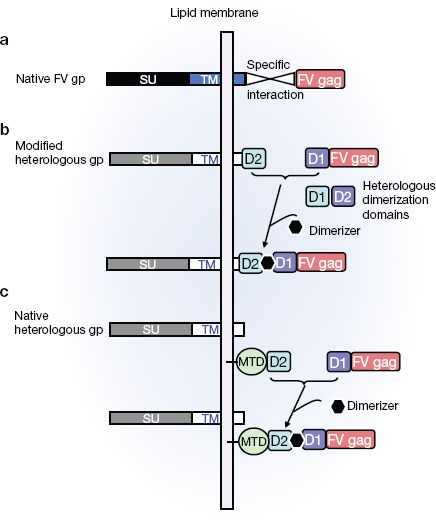Figure 1.

Novel strategy to change foamy virus (FV) vector target cell specificity. (a) Schematic illustration of the interaction between the native FV envelope and FV gag proteins, required for egress of infectious vector particles. (b and c) Schematic representation of strategies that allow the tropism of FV vectors to be modified. (b) In the first strategy, a heterologous dimerization domain (D1) is fused to the FV gag protein and the cognate domain (D2) is fused to an envelope glycoprotein of choice. A dimerizer molecule will bring FV gag to the membrane via binding to the envelope glycoprotein and allow budding of infectious particles. (c) In the second strategy, the heterologous envelope glycoprotein remains unmodified. As in b, a heterologous dimerization domain (D1) is fused to the FV gag protein and the second dimerization domain (D2) is fused to a membrane-targeting domain (MTD). The heterologous unmodified glycoproteins are already naturally expressed at the lipid membrane, while addition of the dimerizer brings FV gag to the lipid membrane as a result of its interaction with the MTD D2 domain. This colocalization of FV gag and envelope glycoprotein results in the efficient release of infectious FV vector particles.
